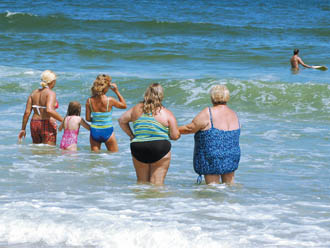29 Jan 2008
Inactive lifestyle speeds up ageing
BY Tom Walker

Leading an inactive life could speed up the ageing process.
A study published by researchers at King’s College London has shown that people who exercise more in their free time appear to be biologically younger than their more sedentary counterparts.
A team of researchers looked for evidence of ageing at a molecular level in the population by analysing telomeres, which cap the end of chromosomes in our cells and protect them from damage.
With age, telomeres shorten, leaving people more susceptible to cell damage, which causes disease.
The new study suggests that a sedentary lifestyle may diminish life expectancy not only by predisposing to age-related diseases but also because it may influence the ageing process itself.
The investigators found that telomere length decreased steadily with age and there was a significant association between increasing physical activity and longer telomere length even after adjusting for other measurable influences (body mass index (BMI), smoking, and socioeconomic status.
Dr Lynn Cherkas from the Twin Research & Genetic Epidemiology Unit at King’s College London, which undertook the research, said: “Overall, the difference in telomere length between the most active subjects and the inactive subjects corresponds to around nine years of ageing.
“A sedentary lifestyle appears to have an effect on telomere dynamics – thus providing a powerful message that could be used by clinicians to promote the potentially anti-aging effect of regular exercise.”
The researchers studied identical and fraternal twins comparing the telomere lengths of twins who were raised together but take different amounts of exercise.
Physical activity has already been shown to have a major impact on health: frequent exercisers display reduced cardiovascular risk and are at lower risk for a number of conditions – including type 2 diabetes, mellitus, cancer, hypertension, obesity and osteoporosis.
Close Window